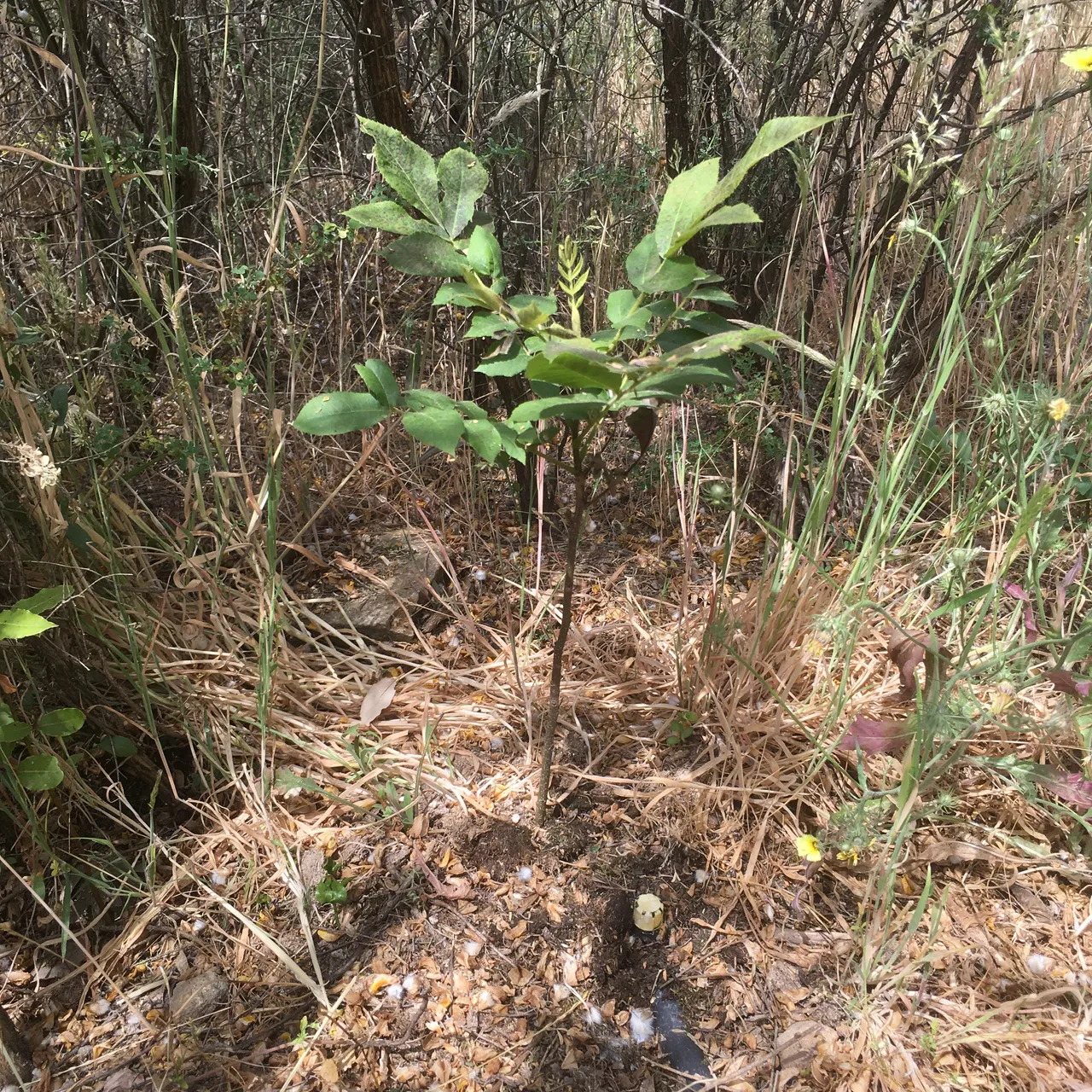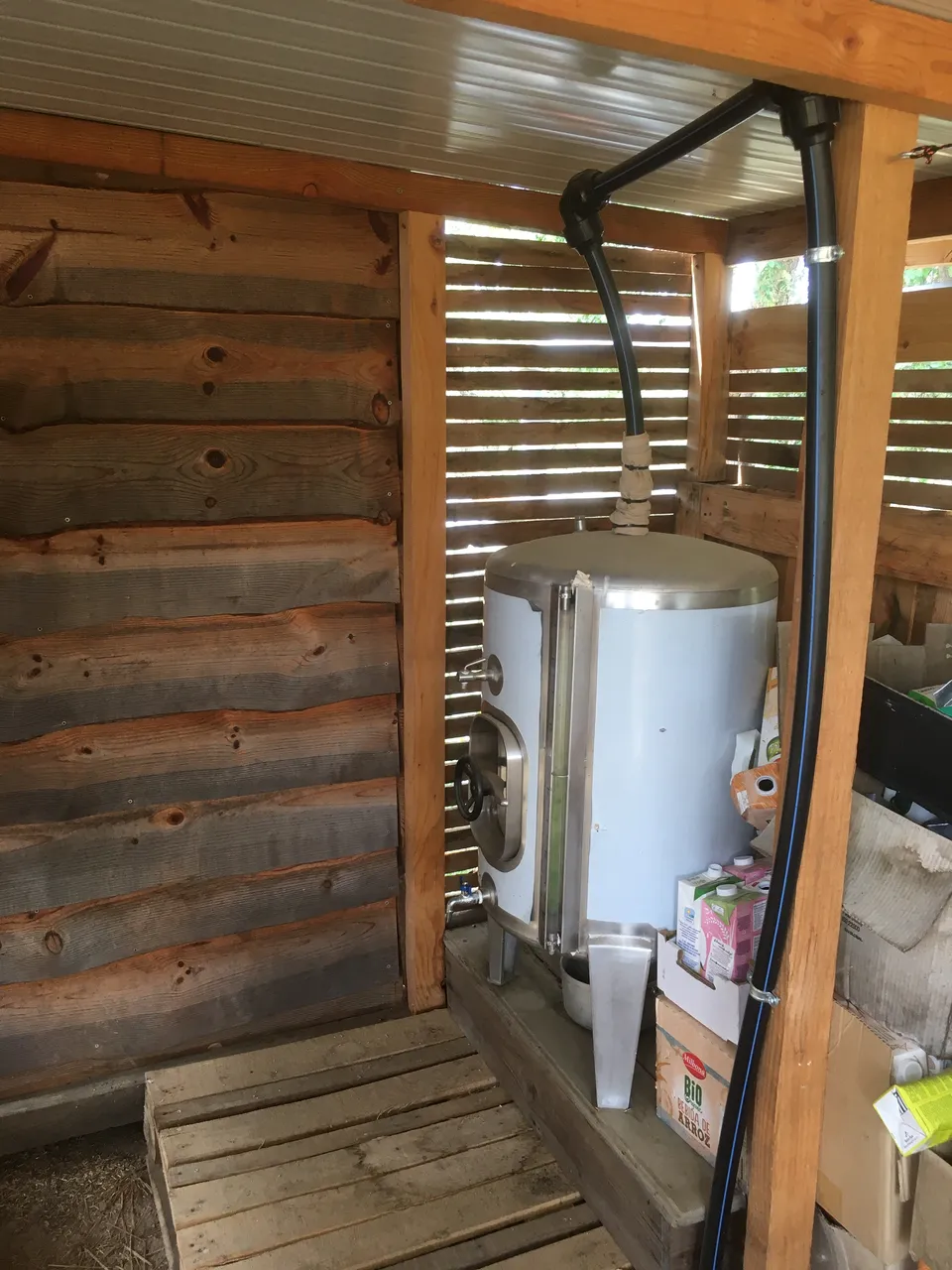
Because every drop counts.
I would like to dedicate this post to @anttn who inspired me to write it and is doing his first steps in the planning of his farm in France and also to both Maria João and Elad who are doing the same locally here in Portugal.
actually, Maria João is getting her Borehole drilled as I write these words.

an aerial view of the farm. a 2.2 hectares of mixed farmland and nature dotted with over 100 olive trees and many other fruit trees and several veggie patches. it is frequented by many birds, wild boars, foxes, mongoose, deer and is house to many toads, frogs, snakes, salamandras among other fauna.

this image shows elevation lines and is to give an idea of the topography which is key at the time of planning water systems.
this map was made using Contour map creator a very useful tool in Permaculture design processes.
Rain catchment

like seen in the first photo, we try to catch and store as much water as we can from our roofs. water that is later being used for irrigation in our long and dry summer months.
nearly 95 square meters of roof area (out of about 240 square meters total) are currently collecting water from rains.
every square meter collects 1 Liter of water for every 1mm of rainfall. in big rain event, our water deposits fill up very quickly. what limits us from collecting much more, is our current deposit capacity (3060 Liters).

the farm is dotted with artificial water sources that are topped up manually as needed in order to support biodiversity throughout the dry season. this is a clay plate, filled with stones, where insects can safely land and satisfy their thirst, as well as the many birds which are present.

the pond that was recently added as a permanent water source stands in contrast to the drying surroundings. it is being filled with water used in our outside bathtub (no chemicals used) and the tiny plant leaves floating on its surface help keeping the water from evaporation.
https://youtube.com/shorts/f5HK0SAMCU0?feature=share
and another.

permanent drip points are yet another way to maintain humidity locally all year round. above is a young Pecan that is the main beneficiary. we use an adjustable flow dripper that is set to its minimum.
it is extremely important to cover the tubes from direct sunlight, as to avoid watering with boiling water in summer. as a rule, we water manually early in the mornings before the sun turns too hot.
 pumping water from our Borehole to our main water deposit (lowest point on the farm to highest)
pumping water from our Borehole to our main water deposit (lowest point on the farm to highest)

our drinking water is stored in a Stainless Steel tank kept in the shade.

this is our 1000 Liter main deposit that sits on the highest point of the farm. it is filled by our solar pump. water from here can be directed anywhere on the farm by gravity.
even though it is relatively small, even after 5 years, we still manage to use this deposit efficiently. in the future, it will either be extended or replaced with a bigger one.
being transparent in the sun has the downside of allowing the growth of algae.

It was fitted with a filter that catches pieces of these algae from blocking drippers on our various drip lines. the large black tube is the filling line that arrives from the Borehole. the yellow tube protects a cable connected to a float, that activates the pump when water level drops when set to "Automatic".

an overview of the whole system.
water flows from the Borehole (at bottom left) to the main deposit and from there by gravity downhill (yellow arrows)
the light blue arrows are three drip lines fed by the main deposit.
the orange arrows show the flow of a seasonal drain canal that fills up our well, which is not being used as yet. this canal was equipped with small dams to slow the flow of water and allow for more of it to be absorbed locally.
the circular blue shape is our pond, square ones are rain catchments from roofs.

and lastly, this is our A level which is used to establish contour lines where later drip irrigation lines are placed.
an important note:
due to our fire hazard reality, much of our water system is buried (about 15cm deep) to protect it in case of having to fight a fire. also buried are all of our electric cables.
https://youtube.com/shorts/jAw6WfAvWxU
it is raining !
**
I am daily making the change I want to see in the world.
If you enjoyed this post please upvote and reHive.
thank you for stopping by.
#UnityTowardFreedom
#AbundanceTribe
#AmazingNature
#Homesteading
#ProofofBrain
#HiveGarden
#ecoTrain
#HiveDiy
#Palnet
#OCD
this post has been published on May 22nd. 2023 at 18:18
